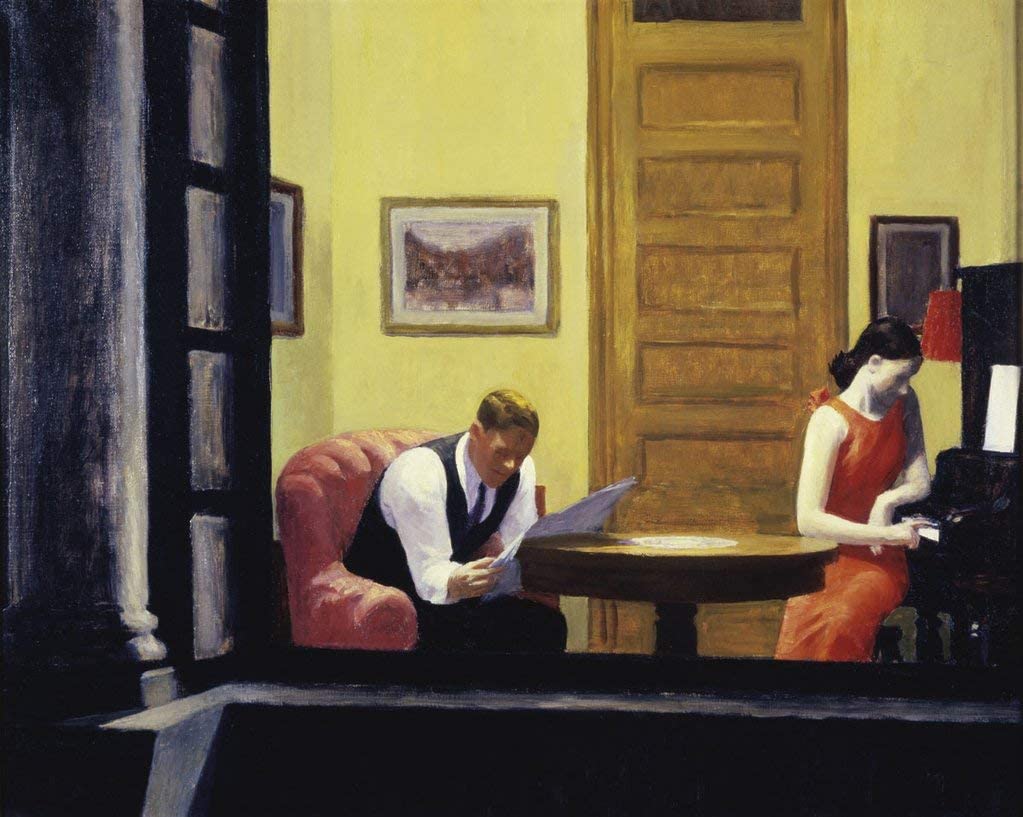Neurologist Oliver Sacks talks about adaptation in his patients. Strengths coming through as a result of disease.
Studs Terkel interviews Oliver Sacks.
And I offer a story bite of my own. Enjoy.
What I’m Reading
This week I was reading several interviews the neurologist/writer Oliver Sacks gave. In one, Studs Terkel talks to Sacks about a client of his, a painter, who through an accident had lost all sense of color. His brain could only see blurs of black, white, gray. The point of the discussion was that people can have strengths that come through as a result of a disease. They were calling it adaptation. The painter had become a night person, painting nocturnal scenes. He no longer liked the glare and brightness of the day.
In the conversation Terkel mentioned that this reminded him of the painter Edward Hopper. Sacks went on to say he knew of another totally color blind person who loved Hopper’s paintings. The client favored the many night scenes, Hopper’s noirish work.
I have always enjoyed Hopper’s paintings, especially “Nighthawks”. I jumped onto Google to read about Hopper’s use of color. One art critic said Hopper loved to paint sunlight against a building wall.
Quotes I found that reference Hopper’s color and light include these few:
- His sense of color revealed him as a pure painter.
- His use of light and shadow effects have been compared to the cinematography of film noir.
- He used saturated color to heighten contrast and create mood.
- Pure studies of sunlight
In a 2018 post in Artsy.net Tess Thackara said: “Nighthawks” is, in many ways, emblematic of Hopper’s noirish, cinematic style, characterized by its voyeuristic perspectives, dramatic interaction of light and shadow, and emotionally isolated figures that inhabit anonymous urban spaces—roadside diners, gas stations, hotels.
So…interesting that some people with “diseases” can adapt to their new situations, then go on to delight in, truly appreciate, a particular artist’s work.
What I’m Writing
Here’s a short piece based on seeing an elderly couple in a hospital years ago. The image has stayed with me.
All the Time in the World
From his place in a rear pew, Thomas fixed his gaze on a casket in the aisle near the altar. A chill wind hit his back as a latecomer slipped into the church. A cleric droned on about dying and buried in the earth and rising up on the last day and eternal life. Thomas watched the man in the front row, alone, white hair, shoulders stooped. Thomas remembered only a glimpse of a life that was. Two people he knew only by sight. Two people who must have loved, laughed, cried.
Thomas recalled two elderly people standing in the elevator lobby outside the hospital’s oncology unit. Both the man and the woman were tall, white-haired, almost stately. Thomas sat off to the side that day, on a bench, reading Louise Penny’s novel A Beautiful Mystery. Thomas, sitting, waiting to visit his own loved one in oncology.
The man had been dressed casually, neatly. Chinos, a polo shirt, loafer shoes. The woman wore a long pink robe, pink slippers, hair pulled back tightly. As he pressed the elevator call button, the man said, Take care and try to sleep. She replied, You too. Get some rest when you get home. You need it. Thomas saw him nod.
The elevator dinged and the door slid open. The man stepped toward it. She stood watching him. They blew kisses to each other. The elevator door closed.
She smiled, walked slowly, proudly, back to her room.
She stood a moment, unmoving. Turned. Thomas remembered she smiled, walked slowly, proudly, back to her room.
The minister walked around the casket, waving clouds of incense, while two altar servers stood with candles.
The pall bearers stepped in, turned the casket, and moved it toward the door.
Following them the elderly man walked alone down the aisle. Dressed nicely in a dark suit, white shirt, black tie. Tears ran down his face.
Thomas thought, You have all the time in the world to rest now.
***
Read my stories on Amazon.


Leave a Reply